The one thing that makes your business unique is its personal story and mission statement. This is your brand’s purpose, and it needs to be fully articulated in order to connect with like-minded consumers. Why was the brand created? What is the business’s vision for the future of the brand? How do you make your customers’ lives better, and when they buy from you, how do those purchases reflect their personalities?
To figure out, you must know the answers to these questions, enabling you to leverage brand storytelling to better connect with your audience. When you understand what your users want, you can go above and beyond, not just meeting expectations, but exceeding them whenever possible. Let’s take a closer look at what works and what doesn’t as you craft your brand story and prepare to communicate with your audience.
Do: Define Your Brand Purpose
Your brand’s story is its mission and purpose for being. The brand’s purpose should center on how your products and services make your customers’ lives easier and their businesses more efficient and profitable.
For example, consider 1-800 Flowers, the floral gifts retailer. Their brand mission is “To Deliver Smiles.” Short, sweet, and to the point.
Crayola’s is “to unleash the originality in every child.” Pretty good right? The mission statement is all about what they do for their customers, kids.
In both of these examples, the customer is central. Your product’s features and benefits can wait. A good brand statement serves as the catalyst for everything. It informs company culture, product innovation, internal communications, and marketing.
If a team knows that its core mission is to “Deliver Smiles,” it will create content that does just that. Blog posts about the appropriate situations in which to send flowers. Insights on how to build relationships with top talent and boost retention with corporate gifts. Examples of how to engage and delight your best clients with seasonal surprises. Content that reflects your values and provides value to your audience inherently reflects your brand’s purpose and tells a strong story.
Don’t: Share Irrelevant Stories
Your brand story is a reflection of your company’s core values. It shows who you are in a succinct, accessible way. In many cases, this means ads and marketing materials that don’t directly reference your products, but showcase what makes your brand unique, but when the story being told can’t even do that much, it will fail.
It’s tempting to inundate visitors with as much information about your brand as possible, but if you try to tell too many stories at once or if the stories you tell are not relevant to your brand’s core values, none of them will resonate the way you want. Mixed messaging, a lack of clarity around your brand’s core values, and unclear calls to action will confuse visitors and cause them to bounce from your website.
Fast food restaurants have a long history of attempting to dip their toes into one too many pools at a time. In 2013, Burger King attempted to introduce Satisfries, a healthier alternative to their traditional fries. It crashed and burned due to a combination of poor marketing and a misread of the chain’s audience. McDonald’s famously attempted to target “discerning adults” with the Arch Deluxe in 1996. It lasted less than four years and cost the company hundreds of millions of dollars.
Know what your brand does best, focus on it, and speak to your audience in a way that they will respond. Brands that stray from their core offerings, attempt to tell a story that isn’t in line with their brand, or grow their audience in an unnatural way can muddy the waters, upsetting existing customers and confusing potential new ones.
Do: Be Creative in Format
Great brand storytelling captures attention by leading with something startling, interesting or unique. Think about how to grab your reader and make them want to know more.
Even a simple graphic can expand the viewers mind and communicate substantial amounts of information:
Fedex Express used a series of world maps to show without any words how they “connect the world,” a core part of their brand story.
In 2016, Marvel leveraged Instagram to showcase a massive, building-sized mural produced by 10 well-known graffiti artists. Marvel’s brand is about storytelling, but it’s largely rooted in the visuals of those stories, as a comics company first and foremost. Their brand story reflected that.
Do: Embrace New Technologies
Every year, new technologies are introduced that increase the number of ways in which companies can communicate with their audiences. Since the launch of the commercial Internet in the 1990s, these connections have become more ubiquitous, accessible, and targeted with each passing year.
Most recently, advances in 5G technology is broadening access to a global scale, enabling brands to communicate with people wherever they are. From augmented reality experiences on phones to virtual reality simulations and metaverse plans, brands are telling stories in creative new ways.
Wendy’s has been at the forefront of several technological booms in marketing and brand storytelling.
From its sassy Twitter account to a 2018 Twitch campaign that amassed 1.5 million minutes watching the brand in Fortnight’s Food Fight mode, Wendy’s succeeds because it authentically engages with these new technologies in creative new ways.
Look for ways to leverage cutting-edge technology, but be sure it fits your brand story. When done effectively, brands can create meaningful, lasting connections with their audiences through new channels and metaverse worlds.
Don’t: Be Inconsistent
Consistency is key in brand storytelling. Keeping your stories consistent across different channels will help you create a stronger impression in the minds of your audience.
It’s also important that individual advertisements or messages also have a consistent tone and that people know what to expect from what you present. Don’t make broad business decisions based on brand directions, eliminate popular advertising campaigns or brand components, or attempt to jump on every new bandwagon that appears in an attempt to stay relevant. Your brand will evolve with time, but it should always be reflective of your core principles, not the cultural zeitgeist.
One of the most often studied examples of failure through brand inconsistency is Coca Cola’s attempts to change their brand in the 1980s with “New Coke.” Today, it’s widely accepted that Coca Cola is one of the world’s most valuable brands, worth $87.6 billion, but after the surge in popularity of Pepsi in the 1970s, Coca Cola attempted to pivot and modernize their look and feel.
It was a catastrophic failure. Regardless of taste, people had grown accustomed to the 100-year-old brand’s look and feel and didn’t want a change. They quickly ended the “New Coke” line and have remained consistent since, experimenting instead with offshoots and new flavors to grow market share.
Ever visited a clickbait site and been disappointed in the low-quality, uninformative content you found? You never want your customers to feel like they’ve been tricked into reading something and you were just trying to sell to them. Be authentic and consistent with your brand’s story.
Do: Keep Your Story Skimmable
Most adults today are on the fast track, bouncing between work, family activities and outside interests. 55% of people visit a site for only 15 seconds before bouncing to somewhere else on the web.They may only have a few seconds to read your article, watch your video, or engage with your website.
Use subheadings and bullet points to keep things short and to the point. The reader should be able to skim and get the gist of the story in as little time as possible. If they are interested in continuing, additional details flesh out the story and make it a bit richer. Not everyone will read all the extras.
Practice and Get Feedback
Effective brand storytelling does more than just communicate the features and benefits of a product. It communicates what makes your brand unique, engages the audience on an emotional level, and deepens your relationships with prospects and customers. It’s an opportunity to create memorable experiences that linger, becoming synonymous with your brand.
An effective brand story is evocative and engaging, but consistent and reflective of the brand’s purpose. It avoids irrelevant or performative elements that don’t reflect your core values, it speaks to your target audience where they are most likely to be online, and it is above all else authentic. Do these things and you will create a lasting impression that helps grow your brand and your business over time.
.png?width=250&height=153&name=CSI-OverskiesRebrand_LOGO-01(smaller).png)

.png?width=100&height=61&name=CSI-OverskiesRebrand_LOGO-01(smaller).png)


.png?width=88&name=CSI-OverskiesRebrand_LOGO-01(smaller).png)



